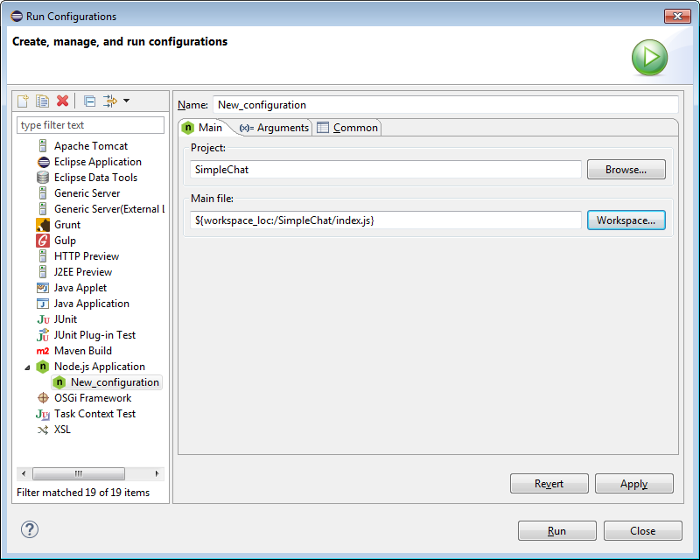

In order to run/debug a Node.js app you need to select Running and debugging Node.js applications is pretty straightforward. NOTE: This change will affect all Node.js launch configurations since this is a workbench-wide setting. This can be achievedīy clicking on the checkbox at the left of the desired installation: When there are multiple Node.js installations defined, it is possible to switch the default one used to run the workbench Node.js applications. Only available for user-defined Node.js runtimes. Remove: Delete an existing runtime definition.This is specially useful if you want to run the same installation with different runtime arguments. Duplicate: Create a copy of an existing definition of a Node.js runtime.For non-user defined runtimes this will show the runtime settings in read-only mode. Edit: Modify an existing Node.js runtime definition.Add: Provide the definition of a new Node.js installation.The identified global Node.js (if there is one) will be listed there, however you can use the buttons on the right side to work with runtimes as follow: To do that, navigate to Eclipse Preferences → JavaScript → Runtimes, where the following dialog will appear: Node.js runtimes available in the workspace. However, it is also posible to define customized Node.js binary paths, switch the Node.js used by default to run or debug applications and fully control the Node.js runtime definitionīy default, the Node.js launch configuration will try to use the system-wide Node.js installation which is automatically identified on workbench startup. TIP: Installation instructions for Node.js and npm can be found here.
How to use eclipse for node js software#
The following software must be pre-installed:


 0 kommentar(er)
0 kommentar(er)
